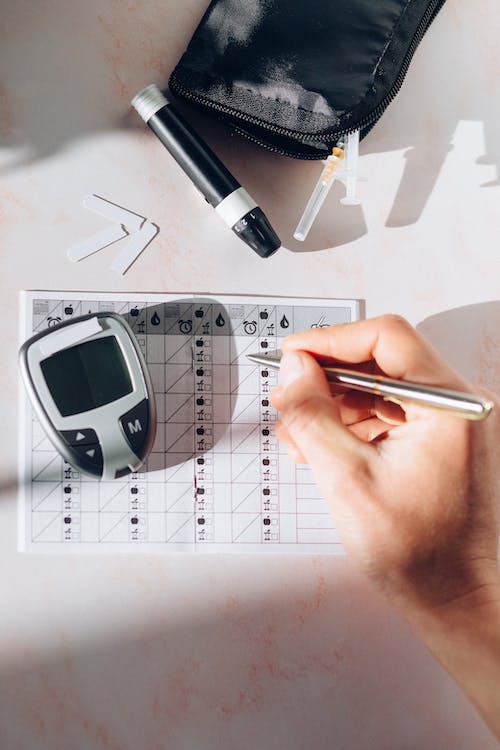Monitoring your blood sugar levels is a crucial aspect of managing diabetes. It is significantly more critical for patients with type 1 diabetes, also known as insulin-dependent diabetes. You can check your blood sugar levels in different ways, including using a CGM system or a glucose meter and test strips.
Checking your blood sugar levels lets you determine if your treatment plan is working well. It also gives you an idea of how to manage the condition daily and sometimes hourly. Here is a guide on how to check your blood glucose levels using different methods.
The Blood Glucose Meter Method
 Every glucose meter has instructions on how to use it. However, here is how the process generally goes:
Every glucose meter has instructions on how to use it. However, here is how the process generally goes:
Thoroughly wash your hands to avoid getting an inaccurate reading. Food and other substances can alter the reading on the glucose meter.
- Place the test strip on the glucose meter
- Prick the tip of your finger with the lancet that comes with the test kit
- Touch the edge of the test strip with a drop of blood from your finger
- The glucose meter will display the blood glucose levels on its screen in seconds.
Meters are designed to test blood sugar from alternate sites such as the palm or the forearm. The readings may not be as accurate as those from a finger, especially during exercise or after a meal when the blood sugar level changes often.
Continuous Glucose Monitoring Systems (CGMs)
Continuous glucose monitoring involves wearing a device that measures your glucose levels every hour of the day. It has a sensor placed under the skin, usually behind the arm or on the lower belly. The sensor is programmed to measure the sugar or glucose levels in the interstitial fluid. This is the fluid between the cells of the body.
CGMs are of different types and are made by a variety of brands. There are CGMs devices that are specific to certain insulin pumps, while there are those that can operate indecently. These devices are also programmed to send an alarm when the blood sugar levels are too low are too high.
It is essential to recognize that CGM devices can also be inaccurate or fail, as with technology. You can, therefore, not completely rely on them solely, so you will need to check their accuracy with a few finger sticks during the day. You can use the data from the finger stick test to calibrate the CGM device.
CGM devices are prescribed to patients and cannot be bought over the counter without a prescription. You can ask your healthcare provider about them if you are interested in one. You will also have to talk to your insurance company to see whether they cover the cost of the device and the brands they cover to help you make an informed decision.
How Many Times Should You Check Your Blood Sugar Levels?
 The frequency of how often you should check your blood sugar levels depends on the type of diabetes and other factors, including the type of medication you are on. Your life’s demands and overall health play a huge role in how often you should check your blood sugar levels.
The frequency of how often you should check your blood sugar levels depends on the type of diabetes and other factors, including the type of medication you are on. Your life’s demands and overall health play a huge role in how often you should check your blood sugar levels.
Here are some reasons that you may want to check your blood sugar levels more often:
- If you are pregnant
- If you take insulin
- If you have had trouble reaching your blood glucose targets
- If you are sick
- If you often have low blood sugar levels without experiencing the usual warning signs
- If you recently had surgery
When Should You Check Your Blood Sugar Level?
Your healthcare provider or doctor will give you the best time to check your blood sugar levels. The timings may vary from one patient to another. You should, however, check your sugar levels once you experience any symptoms of high blood pressure.
Your doctor will also give you some general guidelines on the times you should check your sugar levels and which are most beneficial to help you have an effective diabetes management plan.
Are you looking for ways to monitor and manage type 2 diabetes? Visit Columbia Medical Continuous Glucose Monitoring Systems (CGMS). We are experts in continuous glucose monitoring devices to help you manage Type 1 and Type 2 diabetes with no finger sticks! We will help you devise the perfect plan to manage your condition to improve your quality of life.






 We are experts in Continuous Glucose Monitoring Systems (CGMS). Our CGM devices will help you efficiently manage Type 1 and Type 2 diabetes with No Fingersticks!. Abbot’s Freestyle Libre System will track the glucose levels in your blood and help you determine how much insulin you will need and when you will need it!
We are experts in Continuous Glucose Monitoring Systems (CGMS). Our CGM devices will help you efficiently manage Type 1 and Type 2 diabetes with No Fingersticks!. Abbot’s Freestyle Libre System will track the glucose levels in your blood and help you determine how much insulin you will need and when you will need it!